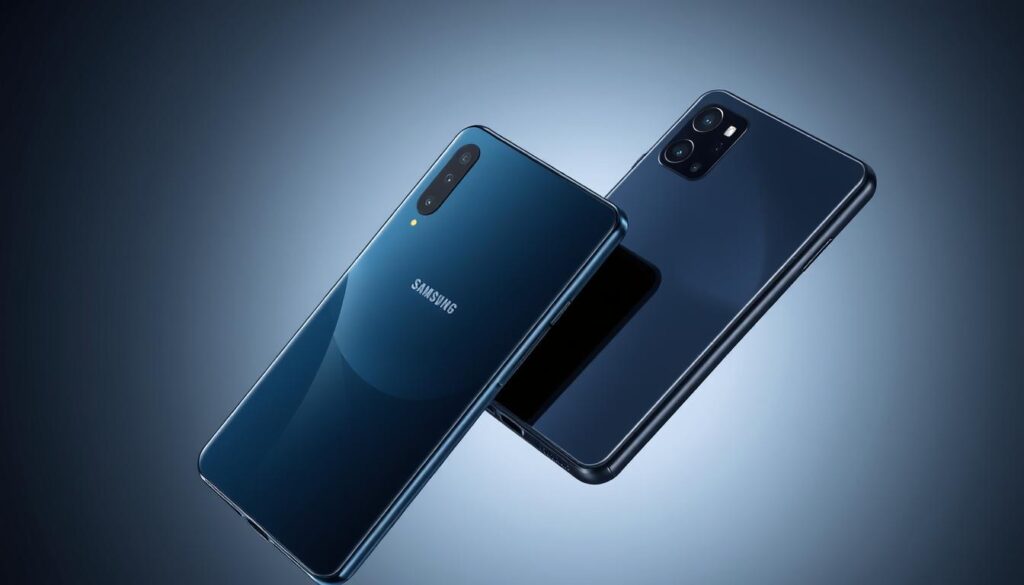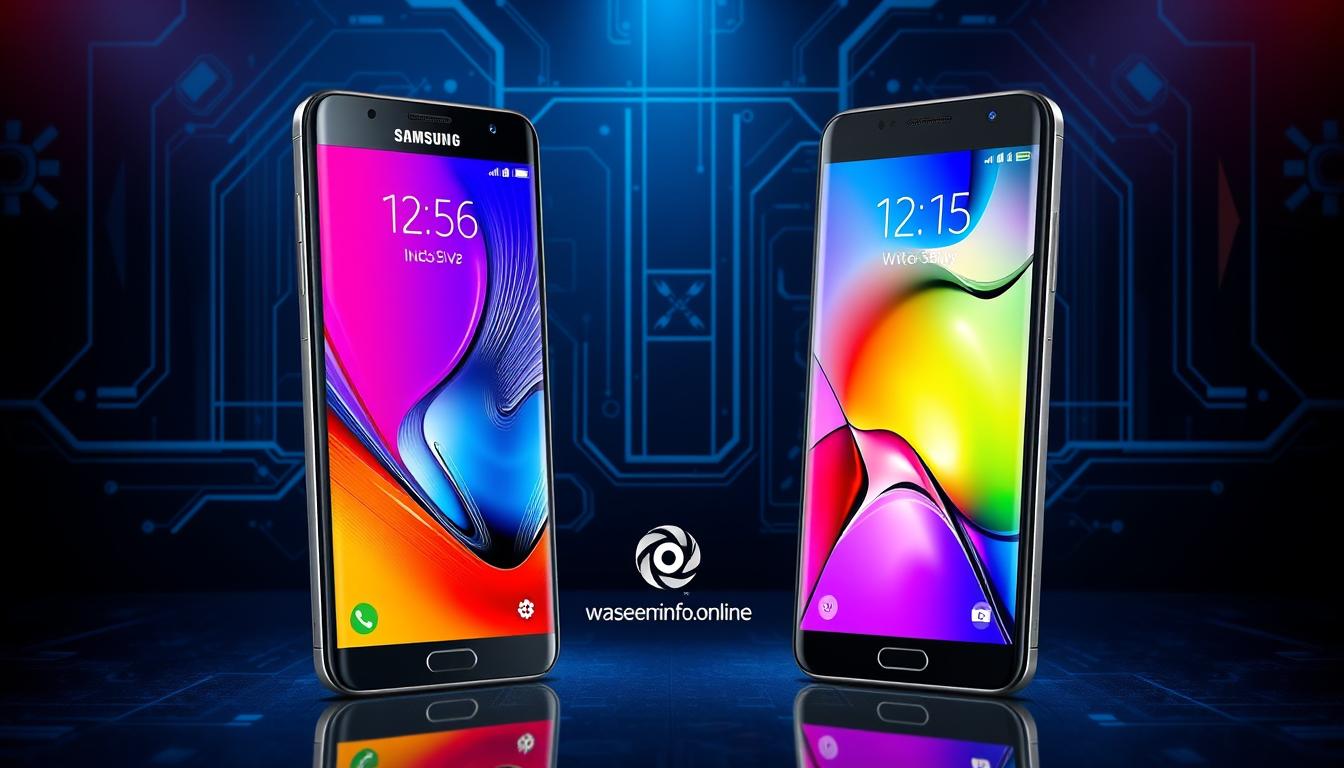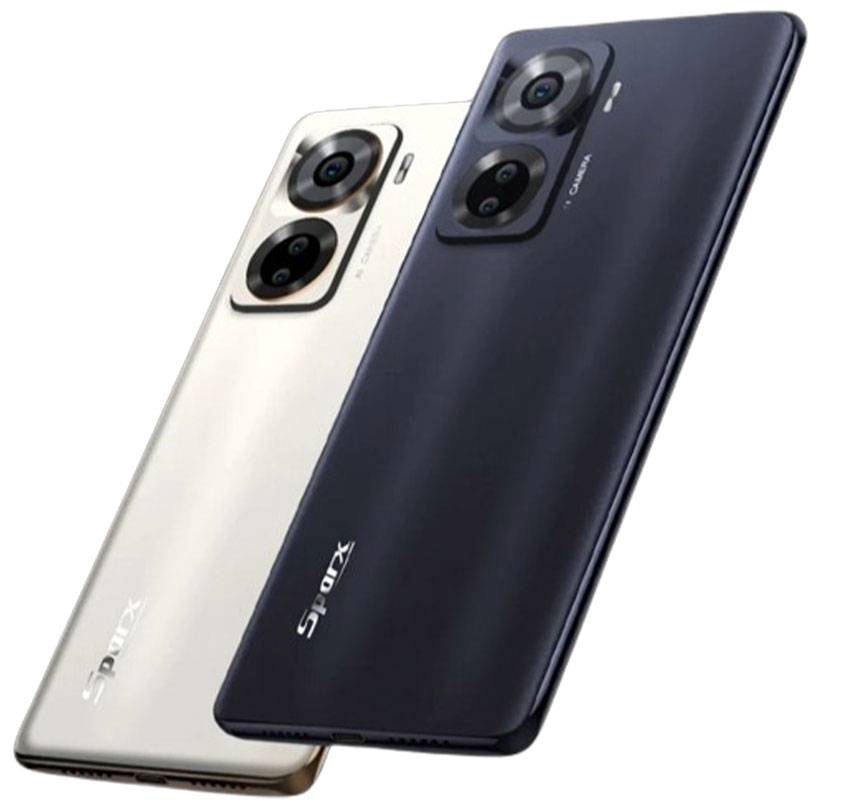The battle between Samsung and Infinix in the smartphone world is getting fiercer. Both are big names in the Android market, offering a wide range of phones. This guide will help you understand what makes Samsung and Infinix phones special. It’s all about making the right choice for your next smartphone.
Key Takeaways
- Explore the brand heritage and global presence of Samsung and Infinix
- Analyze the design philosophy and build quality of both smartphone brands
- Benchmark the performance and processing power of Samsung and Infinix devices
- Assess the camera technology and imaging features offered by these brands
- Compare the price-to-performance ratio, feature set, and user experience differences
Understanding Samsung and Infinix Brand Heritage
In the world of mobile tech, Samsung and Infinix stand out. Samsung is a global leader, while Infinix is growing fast, especially in new markets. This shows how diverse and competitive the mobile world is.
Samsung’s Global Market Presence
Samsung’s story is one of constant innovation and leading the market. It’s a top maker of mobile devices, offering a wide range of phones for all tastes. Samsung is strong everywhere, showing it meets the changing needs of phone users worldwide.
Infinix’s Rise in Emerging Markets
Infinix is making a big splash in emerging markets, like Africa and Asia. It focuses on phones that are full-featured but affordable. This has won over many who want good value without spending too much. Infinix’s brand history and smart strategy have helped it stand out in the mobile competition.
Brand Value Propositions
These two brands are fighting for phone users’ attention. Samsung uses its global fame and tech skills. Infinix, on the other hand, targets those who want quality but don’t want to spend a lot. This battle shows how the mobile competition is always changing.

Design Philosophy and Build Quality Comparison
Samsung and Infinix have different ways of designing smartphones. Samsung focuses on high-quality materials like glass and metal. This makes their phones both durable and stylish.
Infinix, on the other hand, aims to offer good looks at a lower price. Their phones use polycarbonate and Gorilla Glass. This gives them a strong and fashionable look for those on a budget.
| Feature | Samsung | Infinix |
|---|---|---|
| Build Materials | Glass, metal, and aluminum alloy | Polycarbonate, Gorilla Glass |
| Durability | High | Moderate |
| Aesthetics | Premium | Stylish |
Choosing between Samsung and Infinix depends on what you want and how much you can spend. Samsung offers top-notch design and build. Infinix gives you a stylish phone at a lower cost.
“Design is not just what it looks like and feels like. Design is how it works.”
– Steve Jobs
Finding the right balance between durability and materials is key. It meets the varied needs and tastes of smartphone users.

Performance Benchmarks and Processing Power
The performance and processing power of mobile devices are key to a great user experience. Let’s explore the processor specs, gaming, and multitasking of Samsung and Infinix phones.
Processor Specifications
Samsung’s top models use their Exynos processors or Qualcomm’s Snapdragon series. These processors offer great performance and save power, making multitasking and gaming performance smooth. Infinix, meanwhile, uses MediaTek’s mobile processors. These processors are known for their balance of power and cost.
Gaming Capabilities
Both Samsung and Infinix can handle today’s gaming performance needs. Samsung’s flagships have special gaming modes and cool graphics for a top gaming experience. Infinix is also improving its gaming, with devices that can handle mobile gaming performance well.
Multitasking Experience
Samsung’s devices are great at multitasking thanks to their strong processors and software. Samsung’s One UI helps solve Android challenges and makes multitasking better. Infinix’s XOS interface also offers a smooth multitasking experience in its phones.
Both Samsung and Infinix have their strong points in performance and processing. Your choice will depend on your needs, preferences, and budget.

Camera Technology and Imaging Features
The fight between Samsung and Infinix in smartphone cameras is intense. Both brands have worked hard to improve their photo quality and video recording. Let’s explore the camera tech and features of these top mobiles.
Samsung is known for its leading camera software and sensor tech. Their latest phones have high-res main cameras and extra lenses. These cameras take amazing smartphone cameras in any light, with great low-light shots and AI image processing.
Infinix has also improved its cameras, with quad-camera setups and new software. Their phones offer great photo quality and creative modes for all users.
| Feature | Samsung | Infinix |
|---|---|---|
| Primary Camera Resolution | 48MP – 108MP | 48MP – 64MP |
| Lens Configuration | Quad-camera setup with ultra-wide, telephoto, and depth sensors | Quad-camera setup with ultra-wide, macro, and depth sensors |
| Flagship Camera Software | Advanced AI-powered image processing, professional-grade camera modes | AI-assisted photography features, creative shooting modes |
| Video Recording | 4K video recording at 60FPS, advanced video stabilization | 4K video recording at 30FPS, basic video stabilization |
Both Samsung and Infinix have improved their cameras a lot. But Samsung still leads in smartphone cameras and photo quality. This is due to better sensors, more lens options, and advanced camera software. Yet, Infinix is catching up, offering great value in camera features.
sumsung mobile phone vs infinix mobile: A Detailed Analysis
When comparing smartphones, Samsung and Infinix often stand out. They offer a wide range of devices for different budgets and tastes. Let’s look closely at what each brand offers to help you choose the best phone for you.
Price-to-Performance Ratio
Value for money is a big factor in choosing a smartphone. Infinix is known for its affordable, feature-rich phones. Samsung, however, offers high-end models with top performance but at a higher cost. If you’re looking for the best deal, Infinix might be the better choice. But if you want the latest tech, Samsung’s flagships are worth considering.
Feature Set Comparison
Both Samsung and Infinix have a wide range of features. Samsung phones are known for their advanced user interface and top-notch android features. Infinix, meanwhile, focuses on offering lots of features at lower prices. This makes them a great option for those who want functionality without the high cost.
User Experience Differences
The user experience varies between Samsung and Infinix phones. Samsung’s high-end models offer a polished user interface and seamless integration. Infinix, however, has its own Android-based OS, XOS, which provides a unique experience and exclusive features. Your choice depends on what you value more: a refined interface or a unique OS.
| Feature | Samsung Mobile | Infinix Mobile |
|---|---|---|
| Processor | Flagship-grade Exynos or Snapdragon | Mid-range to high-end MediaTek chipsets |
| Camera | Advanced multi-lens camera systems | Decent camera performance with AI-powered features |
| Display | High-resolution AMOLED displays | IPS LCD panels with good color accuracy |
| Battery Life | Optimized for all-day usage with fast charging | Longer battery life with efficient power management |
“The choice between Samsung and Infinix ultimately comes down to your specific needs and preferences in terms of performance, features, and value for money.”
Battery Life and Charging Technologies
Smartphone performance depends a lot on smartphone battery life and quick recharge options. We’ll look at Samsung and Infinix phones to see which lasts longer and charges faster.
Samsung is known for its power management and battery capacity. Their latest phones have big batteries, from 4,000mAh to 5,000mAh. This means you can use your phone all day without running out of power. They also support fast charging for quick top-ups.
Infinix has also improved a lot in battery life and fast charging. Their phones have batteries from 5,000mAh to 6,000mAh. This is great for those who use their phones a lot. Infinix’s XCharge technology makes charging fast and easy.
| Feature | Samsung | Infinix |
|---|---|---|
| Battery Capacity | 4,000mAh – 5,000mAh | 5,000mAh – 6,000mAh |
| Fast Charging | Supported | Supported (XCharge) |
| Power Management | Advanced | Advanced |
Both Samsung and Infinix offer great battery performance and charging options. Your choice might depend on what you prefer and how you use your phone. Both brands have strong features for a reliable and long-lasting phone experience.
Software Experience and UI Customization
Samsung and Infinix have different user interfaces. Samsung’s OneUI is known for being easy to use and working well with the device’s hardware. It gives a smooth and complete user experience. On the other hand, Infinix’s XOS lets users change their phone’s look and feel to match their style.
OneUI vs XOS Interface
OneUI has a clean layout that makes it easy to navigate. It also has features like split-screen multitasking and one-handed mode. XOS, however, focuses more on customization. Users can change their home screens, icons, and more to make their phone truly their own.
Update Frequency and Support
Samsung is good at keeping its phones updated. It provides security patches and major Android updates quickly. Infinix is also getting better at keeping its phones updated. It makes sure its phones get the latest features and fixes on time.
Exclusive Features
- OneUI has features like Samsung DeX, which turns your phone into a desktop when connected to a big screen.
- Infinix’s XOS lets you create your own themes and change the app drawer.
Choosing between Samsung’s OneUI and Infinix’s XOS depends on what you value more. Do you want timely updates and a polished interface, or do you prefer customization options? Both offer great experiences, tailored to different user needs.
| Feature | Samsung OneUI | Infinix XOS |
|---|---|---|
| User Interface | Intuitive and polished design | Highly customizable |
| Update Frequency | Consistent and timely | Improving, but still lagging behind |
| Exclusive Features | Samsung DeX | Custom themes and app drawer redesign |
Price Points and Value Proposition
Samsung and Infinix have different strategies for smartphone pricing. Samsung focuses on premium devices with the latest tech at a higher cost. These phones are perfect for those who want the best in smartphone pricing.
Infinix, however, targets the budget phones and value for money market. They offer many features at lower prices, attracting those who want good value. Infinix’s budget phones and mid-range devices are a great choice for those looking for a balance between cost and quality.
| Smartphone Pricing Comparison | Samsung | Infinix |
|---|---|---|
| Flagship Devices | $800 – $1,200 | N/A |
| Mid-Range Devices | $400 – $700 | $200 – $400 |
| Budget Phones | $200 – $400 | $100 – $200 |
Samsung and Infinix have different pricing strategies. Samsung aims for the top with flagship devices at a higher price. Infinix, on the other hand, offers value for money to those on a budget.
Both brands offer a wide range of prices, meeting different needs. This approach helps them reach more customers and compete well in the market.
After-Sales Service and Customer Support
The quality of after-sales service and customer support is key for long-term satisfaction with a smartphone. Samsung and Infinix have built large networks to offer reliable customer support, warranty service, and access to repair centers and smartphone maintenance resources.
Warranty Coverage
Samsung provides a one-year warranty for its mobile devices, covering hardware and software issues. Their warranty service is known for being quick and effective in solving customer problems. Infinix also offers a one-year warranty, giving customers peace of mind against unexpected problems.
Service Center Availability
Samsung has a wide network of authorized service centers worldwide. This makes it easy for customers to find repair centers for their smartphones. These centers have skilled technicians ready to fix various issues, offering a reliable solution. Infinix is also growing its service center network, making support easier to find.
Spare Parts Accessibility
Keeping a smartphone in good condition often requires genuine spare parts. Samsung and Infinix have made it easier to get these parts. They are available through their service centers and online, supporting their customers well.
Both Samsung and Infinix focus on providing great after-sales service and warranty service. They have reliable repair centers and make sure spare parts are easy to get. This ensures a positive experience for smartphone owners in the long run.
Conclusion
Choosing between a Samsung mobile phone and an Infinix mobile device involves several key factors. Both brands have different features, performance, and value. It’s important to consider what each brand offers.
Samsung is known for its top-notch technology and premium quality. It’s a great choice for those who want the best. Infinix, however, offers great value for money, especially in emerging markets. It’s perfect for those on a budget who still want good features.
Samsung’s phones are often praised for their design and build. They use premium materials and have a sleek look. Infinix has also improved its design, offering attractive and well-built devices.
| Feature | Samsung | Infinix |
|---|---|---|
| Performance | Top-of-the-line processors, exceptional gaming capabilities, and smooth multitasking experience | Competent processors, adequate gaming performance, and generally reliable multitasking |
| Camera | Advanced camera systems with excellent image quality, versatile shooting modes, and advanced computational photography features | Capable camera setups that deliver good-quality images, though may not match the technological prowess of Samsung’s offerings |
| Battery Life | Long-lasting batteries with fast charging technologies | Respectable battery life and charging capabilities, though not necessarily industry-leading |
| Software Experience | Polished and feature-rich OneUI interface, with regular software updates and exclusive features | XOS interface offers a fairly customizable experience, though update frequency and exclusive features may not be as extensive as Samsung’s |
| Price | Premium pricing for flagship models, with a range of mid-range and budget options | Highly competitive pricing, with a focus on delivering maximum value for money |
The choice between Samsung and Infinix depends on your needs and budget. Both brands have great options. Think about what you need and what you can afford before deciding.
Expert Recommendations and Future Outlook
Choosing between Samsung and Infinix phones depends on what you need. Samsung is great for those who want a well-known brand with top features. Infinix is perfect for those looking for a good phone without spending too much.
The future of phones looks bright. Samsung and Infinix will keep adding new features. Expect better cameras, faster 5G, and longer battery life. For more on these trends, check out waseeminfo.online.
So, whether you choose Samsung or Infinix, think about what you really want. Look at each brand’s strengths to find the best fit for you. This way, you’ll get a phone that meets your needs in the fast-changing world of mobile tech.
FAQ
What are the key differences between Samsung and Infinix mobile phones?
Samsung leads the smartphone market with premium devices and new tech. Infinix is popular in new markets with affordable, feature-rich phones. Samsung aims for top performance, while Infinix offers great value.
How do Samsung and Infinix compare in terms of design and build quality?
Samsung is famous for sleek designs and quality materials. Infinix focuses on durable, practical designs for its audience in new markets.
Which brand offers better performance and processing power?
Samsung’s top devices have the latest processors for smooth use and gaming. Infinix balances cost with performance, offering good processors for its price.
How do the camera systems of Samsung and Infinix phones compare?
Samsung’s cameras are top-notch, leading in quality and features. Infinix’s cameras are improving, offering good value for mobile photography.
Which brand offers better value for money?
Infinix phones offer more for less, with great features at lower prices. Samsung’s high-end devices have better performance and features, but cost more.
How do the software experiences differ between Samsung and Infinix phones?
Samsung’s OneUI is user-friendly and feature-rich. Infinix’s XOS is customizable for its audience. Both update software regularly, but Samsung supports its devices longer.
Which brand offers better after-sales service and customer support?
Samsung has a strong global service network with good warranties and parts. Infinix is improving its support, but may face challenges in some areas.












